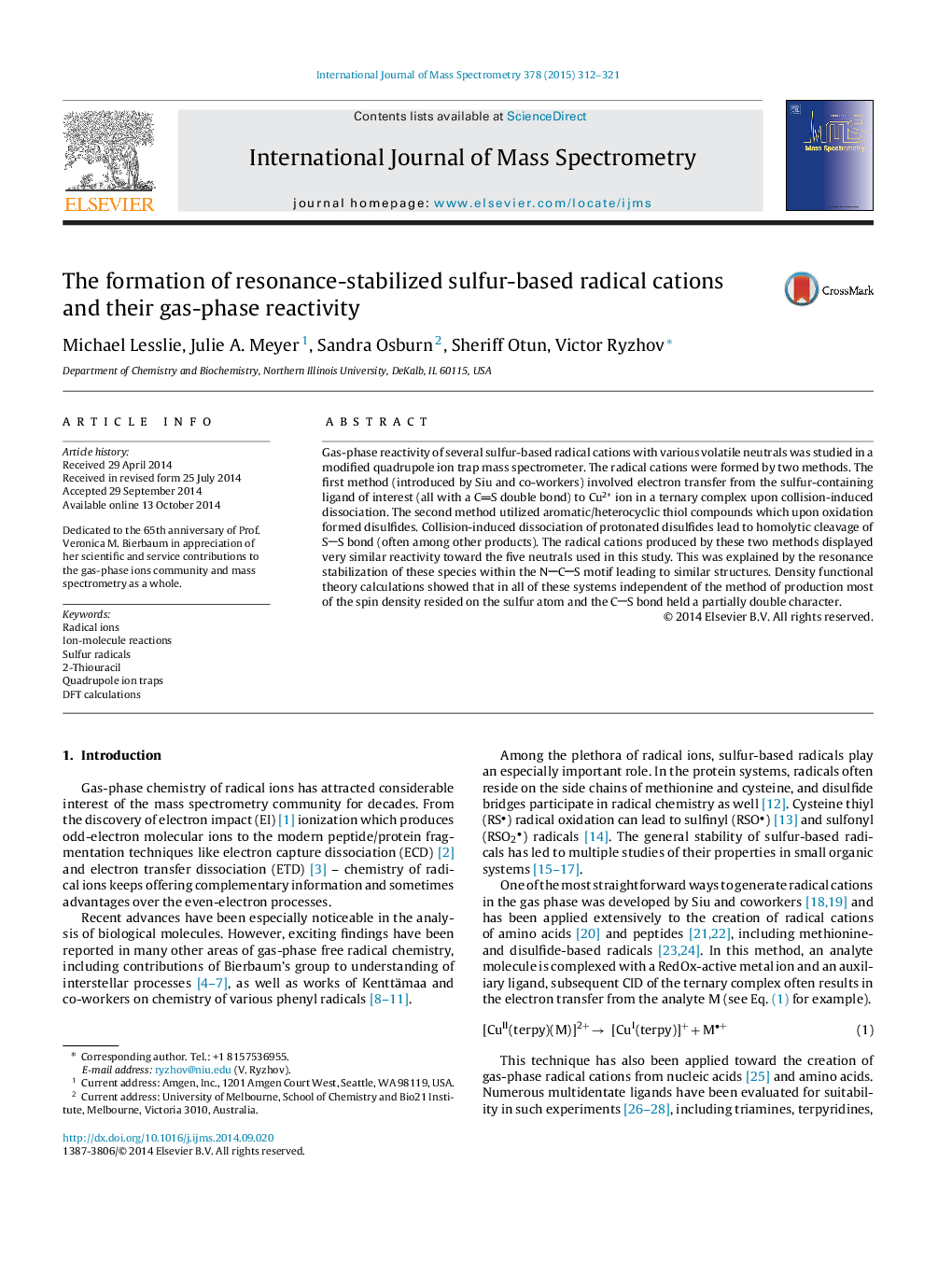| Article ID | Journal | Published Year | Pages | File Type |
|---|---|---|---|---|
| 1192111 | International Journal of Mass Spectrometry | 2015 | 10 Pages |
•Sulfur-based radical cations of 10 organic molecules were formed by two methods.•Method 1: CID of ternary copper complexes; Method 2: CID of protonated disulfides.•Ion-molecule reactions were carried out with several volatile neutrals.•Gas-phase reactivity is independent of the radical cation production method.
Gas-phase reactivity of several sulfur-based radical cations with various volatile neutrals was studied in a modified quadrupole ion trap mass spectrometer. The radical cations were formed by two methods. The first method (introduced by Siu and co-workers) involved electron transfer from the sulfur-containing ligand of interest (all with a CS double bond) to Cu2+ ion in a ternary complex upon collision-induced dissociation. The second method utilized aromatic/heterocyclic thiol compounds which upon oxidation formed disulfides. Collision-induced dissociation of protonated disulfides lead to homolytic cleavage of SS bond (often among other products). The radical cations produced by these two methods displayed very similar reactivity toward the five neutrals used in this study. This was explained by the resonance stabilization of these species within the NCS motif leading to similar structures. Density functional theory calculations showed that in all of these systems independent of the method of production most of the spin density resided on the sulfur atom and the CS bond held a partially double character.
Graphical abstractFigure optionsDownload full-size imageDownload high-quality image (107 K)Download as PowerPoint slide
